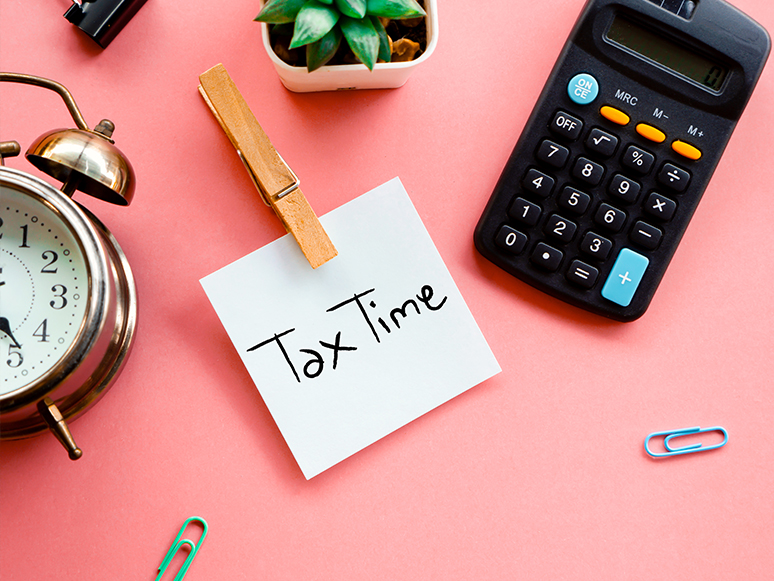logo


19th Dec, 2023

Legislation is currently before Federal Parliament that proposes to allow a deduction of $20,000 (up from
$1,000) for the instant asset write-off of depreciating assets acquired by small business entities in the period from 1 July 2023.These new rules were previously announced by the Federal Government in its May 2023 Federal Budget.
In the period from March 2020, as part of tax relief measures arising out of the COVID-19 pandemic, temporary full expensing of certain depreciation assets allowed many businesses to write off the entire cost of certain assets. The latest Bill proposes that from 1 July 2023, under simplified depreciation rules, depreciating assets costing less than $20,000 (excluding GST), may be immediately deducted, where the asset is first used or ready for use in the year ending 30 June 2024. Note that depreciating assets that are first used or installed ready for use for a taxable purpose on or after 1 July 2024 will be subject to the $1,000 threshold.
The $20,000 threshold will apply on a per-asset basis, so small businesses will be able to instantly write off multiple assets.
The instant asset write-off rules are available to entities that meet the definition of “small business entity” and where the entity carries on a business with an aggregate turnover of less than $10 million.
Connected entities to a small business taxpayer may also need to be considered to qualify for a deduction under the $20,000 instant asset write-off.
Depreciating assets that cost $20,000 or more are allocated to a small business entity general small business pool and can then be deducted at the rates of 15% in the year the asset is allocated to the pool and 30% in subsequent years.
If the balance of a small business entity’s general small business pool is less than $20,000 at the end of the income year ending 30 June 2024, the small business entity will be able to claim a deduction for the entire balance of the pool.
19th Dec, 2023

Treasury has released the Independent Evaluation of the JobKeeper Payment Final Report. The report considers both the impact and processes of JobKeeper. The evaluation assesses the effectiveness of JobKeeper in achieving its objectives, and records lessons learned from the design and implementation of JobKeeper, with a view to informing future policy responses.
JobKeeper was a central pillar of the policy response in Australia to the COVID-19 pandemic. It was a wage subsidy and income support program announced on 30 March 2020, as the third instalment in a series of economic support packages introduced in the space of three weeks. Modifications to policy design, including changes to eligibility criteria and the payment rate and structure, were made following a three-month review. JobKeeper remained in place until 28 March 2021.
The report finds that JobKeeper provided certainty during a crisis, and its take-up was high. It provided support to around four million employees – almost one-third of Australia’s pre-pandemic employment population – and around one million businesses.
Credible estimates suggest that JobKeeper preserved between roughly 300,000 and 800,000 jobs.
With a total cost of $88.8 billion, JobKeeper was the one of the largest fiscal and labour market interventions in Australia’s history. The initial six months of the program cost approximately $70 billion. The first and second three-month extensions cost around $13 billion and $6 billion respectively.
JobKeeper was implemented with incredible speed and was well managed, the report finds. The incidence of fraud was low, and in particular lower than for other ATO-administered programs and taxes such as the cashflow boost, GST tax receipts and large corporate groups income tax.
However, the report says, narrow recipient eligibility and exclusions reduced the effectiveness of JobKeeper and had negative economic consequences.
Exclusions based on employee characteristics such as being a short-term casual or temporary migrant worker compromised the efficacy of JobKeeper and “led to worse outcomes”. In particular, the exclusion of short- term migrants from JobKeeper likely reduced the productive capacity of the Australian economy and constrained recovery in some sectors.
The report states that transparency requirements should be built into policy design to “build public trust and enable appropriate scrutiny of public expenditures”. JobKeeper did not include in its design a public registry or disclosure requirement for entities that received the payment.
JobKeeper was a policy designed for an extraordinary situation. While it was justified during the pandemic, such a policy should be reserved for a macroeconomic crisis and is not appropriate for industry or region- specific shocks or downturns in Australia, the report says.
23rd Sep, 2023

Movement may be afoot on the complex issue of individual tax residency in Australia. In 2019, the Board of Taxation released a report which contained a proposed model for modernising individual residency. The new framework was designed to simplify the tax system and reduce compliance costs for individuals and employers.
The model proposed uses a two-step approach of primary tests and secondary tests. Apart from the government official test, which would replace the Commonwealth superannuation test, the main primary “bright line” test will be the 183-day test, in which a person who is physically present in Australia for 183 days or more in any income year would be considered an Australian tax resident.
One of the secondary tests proposed would require an individual to be physically present in Australia for a minimum of 45 days in an income year before commencing residency, or a maximum of 45 days in an income year before ceasing residency. However, due to various global factors (eg the COVID-19 pandemic), the government is seeking views on whether this 45-day threshold is still appropriate and whether there are any circumstances where days spent in Australia should be disregarded for this threshold.
In addition to the 45-day threshold, the proposed secondary test includes the factor test, which focuses on four specific types of connection an individual may have to Australia. Any individual whose circumstances meet any of the four factors will be deemed to have a stronger connection to Australian than someone who does not.
The Federal Government is now soliciting public feedback on the proposed model before making a decision about whether to proceed with the changes.
23rd Jul, 2023

As the financial year draws to a close, it’s time to start thinking about whether your year-end tax planning is in order. Tax planning requires consideringyour income and deductions for the whole financial year, as well as you’ve met your obligations – for example, whether you’ve made tax-related elections on time and prepared other appropriate documentation and records. Here are some key considerations for this tax time.
The shortcut method of claiming a rate of 80 cents per hour worked from home is no longer available – the measure was temporarily introduced during the COVID-19 pandemic and ended on 30 June 2022.
Instead, you can now claim deductions using the revised fixed-rate method, at a rate of 67 cents per hour, as long as you incur deductible expenses while genuinely carrying out work from home, and keep appropriate records, like timesheets for your work hours and receipts for the expenses.
If your work from home doesn’t meet these conditions, you won’t be able to rely on the fixed-rate method and will need to calculate and apportion the actual expenses. You can also simply choose the actual expenses method if it suits your situation better.
The fixed-rate method covers work-related costs like electricity/gas, stationery, your mobile/landline phone and internet. If you use the fixed-rate method you can’t also claim additional deductions for any of these categories. Depreciation of furniture and equipment (eg if you buy a desk, computer and printer for work) may be calculated separately (and in addition) to the fixed rate.
The ATO has flagged rental properties and holiday homes as an area of particular focus for this 30 June.
It’s important to remember that the ATO receives information from sources like sharing economy platforms, rental bond agencies and state and territory revenue authorities that enables it to detect under-reporting of income and inappropriate deduction claims.
The immediate deduction for the cost of eligible depreciating business assets that has been available under the temporary full expensing concession since 2020 is coming to an end. To access the concession, your business must use the depreciating asset or have it installed ready for use by 30 June 2023.
From 1 July 2023, an immediate deduction will only be available to small business entities (with aggregated turnover less than $10 million) for assets costing less than $20,000.
Subject to certain rules being satisfied, corporate tax entities may be entitled to claim a refundable tax offset by carrying back a tax loss arising in the 2022–2023 income year to one or more of the four previous income years (that is, as far back as 2018–2019).
For an employer to be entitled to a deduction for superannuation contributions, the contribution must be received by the fund on or before 30 June. The super guarantee contribution rate increased to 10.5% of an employee’s ordinary time earnings from 1 July 2022.
Individuals wishing to claim a deduction for personal contributions must provide their fund with a notice of intention to claim a deduction and have that acknowledged by the fund before the earlier of the day the individual’s tax return is lodged and 30 June of the next income tax year.
01st May, 2022

FBT is generally seen as a relatively slow-moving and quiet area of tax law. But Budget day this year saw some movement at the FBT station, specifically regarding COVID-19 tests provided to staff, and also car parking benefits.
The 2022–2023 Federal Budget included a measure, now passed into law, to make costs for taking a COVID-19 test to attend their workplace tax-deductible for individuals from 1 July 2021.
COVID-19 tests, including rapid antigen tests (RATs), provided by employers to employees are considered benefits under the FBT regime.
However, by allowing for an individual tax deduction, the new measure also allows for the operation of the “otherwise deductible” rule to reduce the taxable value of the benefit to zero. The result? By introducing a specific individual income tax deduction, employers would also not have to pay FBT.
Neat solution. Well, apart from the catch: employeelevel declarations could be required when the provision of a RAT is a property fringe benefit (that is, legal ownership of the item passes from the employer to the employee).
Where a RAT is provided as an expense reimbursement or residual benefit, an employer-level declaration is available (that is, one declaration signed by the public officer on behalf of each employing entity lodging an FBT return to declare that there is no private use).
In case collecting hundreds or thousands of employeelevel paper declarations is not how you’d like to spend
your time, we see three options at this stage:
As a reminder:
The scope of the term “commercial parking station” is therefore fundamental to determining if an employer has taxable car parking benefits.
Broadly, a commercial parking station is one where car parking spaces are, for payment of a fee, available in the ordinary course of business to members of the public for all-day parking.
The ATO issued a ruling in 2021 that no longer applied the interpretation that car parking facilities with a purpose other than providing all-day parking (usually charging significantly higher rates) are not commercial parking stations. This was to apply from 1 April 2022.
In effect, this would bring facilities like shopping centre car parks and hospital car parks into the definition of a “commercial parking station”. For employers with only that type of parking within a one-kilometre radius, the consequences were significant, potentially bringing previously non-taxable employer-provided car parking within the scope of FBT.
The Federal Government has announced it will be undertaking consultation with the intent of restoring the previously understood application of FBT to car parking fringe benefits, which is closer to the original policy intent of the car parking FBT provisions. The readjusted definition would then apply from 1 April 2022 instead.
01st May, 2022

Because of the financial impacts of COVID-19, trustees of a self managed superannuation fund(SMSF), or a related party of the fund, may provide or accept certain types of relief, which may give rise to contraventions of the super laws. Some trustees may also have been stranded overseas because of travel bans, which can affect their fund’s residency status.
In recognition of these issues, the ATO is offering support and relief to SMSF trustees for the 2019–2020, 2020–2021 and 2021–2022 income years.
This generally includes not taking any compliance action against an SMSF and not requiring the SMSF auditor to report related contraventions in the following areas: